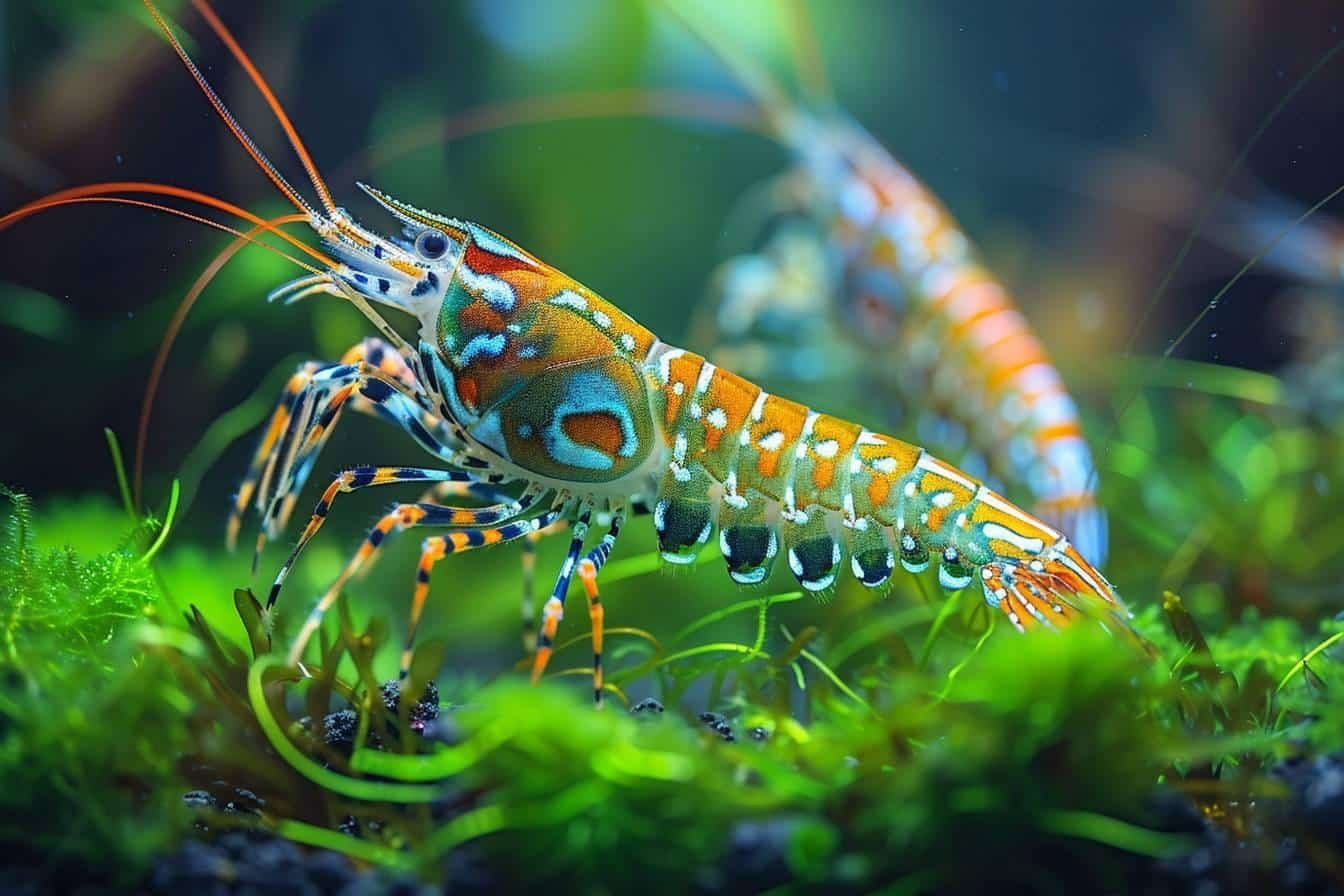If you've ever wondered how to successfully breed aquarium shrimpsyou've come to the right place. As a pet shop floor manager and animal lover, the welfare of these little creatures is very important to me. In this post, I'm going to guide you through the essential steps to ensure successful reproduction and maintain a healthy shrimp population in your aquarium. We'll look at shrimp reproduction, how to care for young shrimp and some specific recommendations for certain popular species.
Reproduction in shrimps
Shrimp reproduction is an intriguing process that generally begins as soon as they reach sexual maturity, i.e. between 3 and 4 months, depending on the temperature of the aquarium. A temperature of around 25°C favours rapid births compared with 20°C, but rapid growth can shorten a shrimp's lifespan.
Fertilisation and egg development
Contrary to popular belief, prawns are not hermaphroditic and require both a male and a female for fertilisation. Fertilisation occurs after moulting, when the female's shell is still soft. The male deposits spermatophores near the female's genitals before the ova are expelled. The female secretes sex pheromones to indicate her readiness for fertilisation.
The fertilised eggs are placed between the female's pleopods (hind legs) for around 3 to 4 weeks, up to a month. During this period, the female ventilates her eggs to oxygenate them and eliminate those that are not viable.
- Optimum temperature: 25°C for rapid birth
- Egg-bearing period: 3 to 4 weeks
- Ventilation of eggs by the female
Birth and care of juveniles
Juvenile shrimp are born self-sufficient and measure just a few millimetres. They immediately begin to search for food, often feeding on small fish. algae and decomposing organic matter. To protect them during water changes, it is essential to provide them with hiding places in the form of dead leaves, fine plants and mosses.
| Step | Description |
|---|---|
| Birth | Autonomous juveniles just a few millimetres long |
| Food | Algae, decomposing organic matter |
| Hideouts | Dead leaves, fine plants, mosses |
How do you rear shrimp japonica?
The Caridina Japonica shrimp, or Amano shrimp, is distinguished by its unique reproduction process, which requires a marine phase. The larvae are transferred to saltwater after 5 to 6 days in freshwater and develop in around 20 to 25 days before having to be reintroduced to freshwater.
Good filtration and the presence of green algae are crucial to their development. A specific diet helps young shrimp to grow well. If you would like to improve the configuration of your aquarium, please consult the complete guide to choosing the best shrimp substrate.
- Essential marine phase for larvae
- Transfer to salt water after 5 to 6 days
- Development in 20 to 25 days
- Back in fresh water afterwards

How to recognise and care for aquarium shrimp eggs?
With experience, you may have noticed eggs clinging to the abdomen of females. These are usually green or brownish as they mature. However, green eggs or other strange colours may indicate health problems or poor water parameters.
Recognising healthy eggs
Healthy eggs are generally uniform in colour, with no spots or abnormal discolouration. They are always located precisely between the female's pleopods. If you detect any anomalies, be sure to test the water parameters and, if necessary, consult an expert.
Care of eggs and young shrimp
It is important to maintain good oxygenation and impeccable water quality. Find out all about a suitable, balanced diet for your young shrimps, consult our detailed guide.
| Parameter | Importance |
|---|---|
| Egg colour | Uniform, with no stains or discolouration |
| Oxygenation | Essential for egg viability |
| Water quality | Parameters still being checked |
How do red cherry prawns live?
Red Cherry prawns (Neocaridina heteropoda) are particularly popular due to their gregarious nature and high reproductive capacity. They feed on algae, decomposing organic matter and granules specific to their species.
How can you tell a male red cherry shrimp from a female?
Males and females are differentiated by size, colour and the presence of an ovarian sac in the female. Females tend to be larger and more colourful. They also live longer than males.
Here are a few characteristics to distinguish them:
- Males are smaller and less colourful.
- Females have a transparent ovarian sac.
- Females often live longer.
Basic principles for breeding
For successful rearing of these shrimps, it is advisable to start with a small group and have them cohabit with fish that eat the juveniles to avoid overcrowding. Adults and sub-adults generally do not attack young shrimp, and the use of specific food for baby shrimp, such as NatureHolic Babyfeed, is essential to provide energy for young shrimp that moult daily at the beginning of their lives.
To find out more about where to buy quality aquarium shrimp, visit our page dedicated to the best addresses and advice.
Communication and observation of aquarium shrimp eggs
Communication is the key to monitoring the health and development of your shrimp's eggs. As a pet shop floor manager, I recommend that you look carefully for signs of good egg development in your shrimp.
Signs of healthy development
Good egg development is characterised by eggs that are uniform in colour, well oxygenated and free from spots or mould. The females also show regular ventilation behaviour to oxygenate them.
Possible problems and solutions
Certain problems can occur, such as green eggs or other strange colours, often indicating environmental concerns. To solve these problems, it's important to regularly check the parameters of your aquarium.
If you want to find out more about the different species of aquarium shrimp, take a look at our guide to the best shrimp species for aquariums.
Finally, to find out everything you need to know about successfully rearing shrimp in an aquarium, take a look at our complete guide to aquarium shrimp farming.
